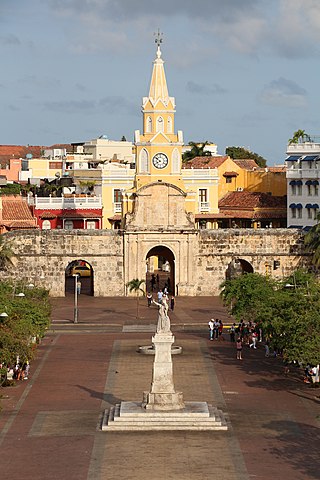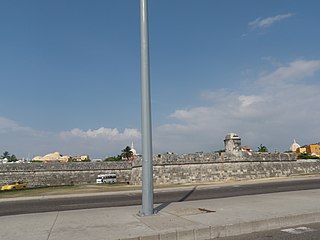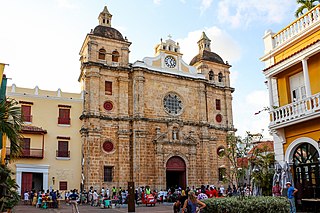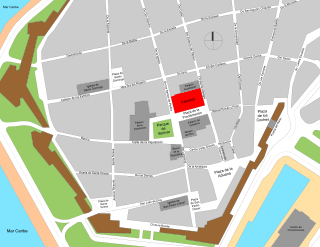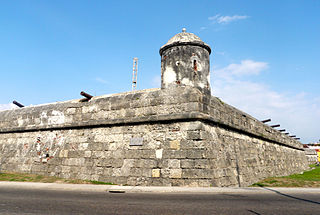Self-guided Sightseeing Tour #1 in Cartagena, Colombia
Legend
Guided Free Walking Tours
Book free guided walking tours in Cartagena.
Guided Sightseeing Tours
Book guided sightseeing tours and activities in Cartagena.
Tour Facts
1.4 km
32 m
Experience Cartagena in Colombia in a whole new way with our self-guided sightseeing tour. This site not only offers you practical information and insider tips, but also a rich variety of activities and sights you shouldn't miss. Whether you love art and culture, want to explore historical sites or simply want to experience the vibrant atmosphere of a lively city - you'll find everything you need for your personal adventure here.
Activities in CartagenaIndividual Sights in CartagenaSight 1: Puerta del Reloj
The Puerta del Reloj, Torre del Reloj or Boca del Puente is the main city gate of the historic center of Cartagena de Indias, in Colombia and the original entrance of the fortified city. It is located between the squares Plaza de Independencia and Plaza de los Coches. The name "Puerta del Reloj" responds to the clock with which it was crowned at the beginning of the 18th century. While the name of Boca del Puente is due to the fact that during the colonial period, a drawbridge was raised at the foot of the channel of San Anastasio, which linked the walled city to the legendary Getsemaní neighborhood. In addition the bridge served like defense of the city, since in case of enemy attack, this one was raised to prevent the access of buccaneers and pirates.
Sight 2: Baluarte de San Ignacio
The Baluarte de San Ignacio is a bastion located in Cartagena de Indias, in Colombia. This bastion, originally called the Bastión de los Moros, is located on the side of the House of the Jesuits and is the work of Cristóbal de Roda. It is part of the extensive fortifications built by the Spanish to defend Cartagena de Indias.
Sight 3: Iglesia de San Pedro Claver
The Iglesia de San Pedro Claver is a church located in Cartagena de Indias, in Colombia.
Sight 4: Parque de Bolívar
Bolívar Park, also known as Plaza de Bolívar, is an urban park located in the historic center of the Colombian city of Cartagena de Indias. It is an emblematic site of the city, loaded with historical and cultural symbolism. It was originally called Plaza de la Iglesia, later, Plaza Mayor, where the military acts of the time were carried out, but in 1610 the Holy Tribunal of the Inquisition was installed in Cartagena and took the name of Plaza de la Inquisición. In 1896 the equestrian statue of Simón Bolívar was installed and since then it has been called Plaza de Bolívar. The statue was modeled in Munich by the Venezuelan sculptor Eloy Palacios, it is made of bronze and its pedestal is made of granite from Finland; there are two aftershocks in Maracaibo and Guayaquil.
Sight 5: Catedral de Santa Catalina de Alejandría
The Cathedral of Cartagena de Indias in Colombia, officially the Metropolitan Cathedral Basilica of Saint Catherine of Alexandria, is located in the historic centre of Cartagena. It is the episcopal see of the Archbishop of Cartagena de Indias, one of the oldest episcopal sees in the Americas. The cathedral is dedicated to Saint Catherine of Alexandria.
Sight 6: Baluarte de Santo Domingo
The Baluarte de Santo Domingo is a bastion located in Cartagena de Indias, in Colombia. The bastion of Santo Domingo has a particular importance, since it is the origin of the construction of the city walls of Cartagena de Indias in the early 17th century. This work of fortification was conceived around 1602 by the engineer Battista Antonelli and his nephew Cristóbal de Roda, also engineer, who decided to build it on the avenue through which the pirate Francis Drake had penetrated, in 1586.
Share
Disclaimer Please be aware of your surroundings and do not enter private property. We are not liable for any damages that occur during the tours.
GPX-Download For navigation apps and GPS devices you can download the tour as a GPX file.
